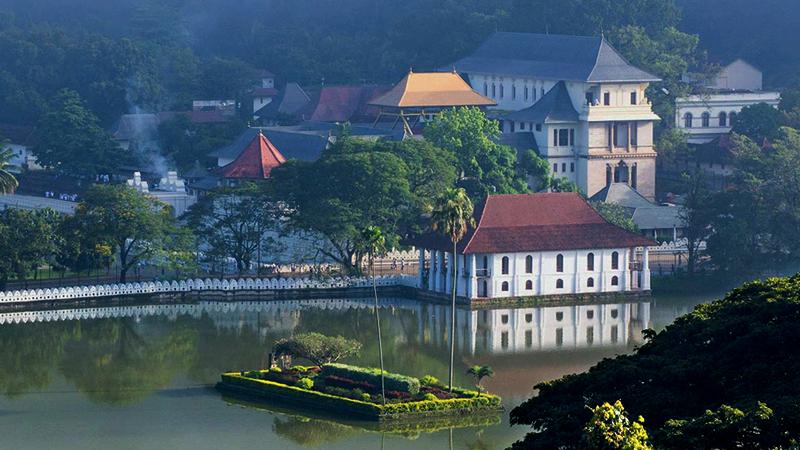
Cultural heritage is the most intriguing factor of a country that captivates the attention and attraction of the outside world. It portrays the identity of the motherland and influences the first impressions of visitors from other lands. Cultural heritage is a replica of history. It enables us to time travel to the history of great civilisations and live there for a moment. The museums, archaeological places, sacred religious places, and ruins of ancient cities, kingdoms, and civilisations show the evolution of mankind, in terms of achieving higher intellectual levels, and absorbing new religions and beliefs. The relics and ruins have the exotic power to reflect flashbacks of memories that drive you back to history.
 Sri Lanka, the pearl of the Indian Ocean beholds its fame and pride for unique cultural, historical, and religious heritage which demonstrate the identity of the country. Having a history of kingdoms, invasions, and the influence of foreign lands have led the ruins to relate their story of centuries past.
Sri Lanka, the pearl of the Indian Ocean beholds its fame and pride for unique cultural, historical, and religious heritage which demonstrate the identity of the country. Having a history of kingdoms, invasions, and the influence of foreign lands have led the ruins to relate their story of centuries past.
The great history behind Buddhist civilisation rooted in Sri Lanka is signified by the ruins, temples, and relics that are thousands of years old. The upheaval of the Buddhist philosophy inspired the kings to rule the country according to spiritual and moralistic ways.
Thambapanni was glowing in the spiritual path leading to ultimate liberation. The emergence of Buddhist culture and philosophy is significant during the periods of the Kandyan Kingdom which led people to follow the path guided by the revelations of Lord Buddha.
The Temple of Tooth or the Dalada Maligawa’ is a reminiscent of Buddhist culture during the Kandyan Kingdom. To date, the city beholds a history of Sri Lankan tradition that is entangled with religion and ancient culture.
Mind healing sight
Kandy is one of the most visited cities in Sri Lanka by the locals as well as tourists. It is a sacred city that preserves the holy relics of Lord Buddha. The Temple of the Tooth is surrounded by the calm waters of the Kandy Lake. The city, the temple, and the lake itself is a mind healing sight for anybody who visits the place. The Kandy Lake and the shades of the giant trees which surround the city and the Temple of the Tooth is a most appealing and powerful view one could encounter at the very first glance of the city. The Kandy lakeside is the ideal path that leads to the Temple of the Tooth. Alongside the lake, wherever you look you will find that the Kandyan tradition is mixed with the architecture as well as the lifestyles of the people.
 The local and foreign devotees who worship the Temple of the Tooth also visit the museums next to the temple. The local museum is entirely dedicated to the antiquities and artifacts of the Kandyan Kingdom and the other museum houses a tremendous collection of statues, artifacts, and relics from Buddhist civilisations across the world.
The local and foreign devotees who worship the Temple of the Tooth also visit the museums next to the temple. The local museum is entirely dedicated to the antiquities and artifacts of the Kandyan Kingdom and the other museum houses a tremendous collection of statues, artifacts, and relics from Buddhist civilisations across the world.
The World Buddhist Museum is also located in the same premises as the Temple of the Tooth, which is a must-visit for anyone who aspires to explore and learn how Buddhist culture and philosophy spread throughout the world. The museum itself is a world tour of the countries where Buddhist civilisation existed and still is.
The relics and antiquities contributed by 16 countries such as India, Bangladesh, Nepal, Pakistan, Japan, China, Korea, Indonesia, Thailand, Myanmar, Laos, Vietnam, Cambodia, Malaysia, Bhutan, and Afghanistan are precious contributions which demonstrate the heart of Buddhist philosophy.
Evolution of Buddhism
The World Buddhist Museum manifests the evolution of Buddhism from its birthplace, India, which spread to different parts of Asia, the South East and the Far East. It is interesting how the other nations across the world absorbed the teachings of Buddha and followed the principles in the pathways of Theravada and Mahayana.
The spiritual ways to accomplish liberation are not that far away if one dissolves himself in seeking.
